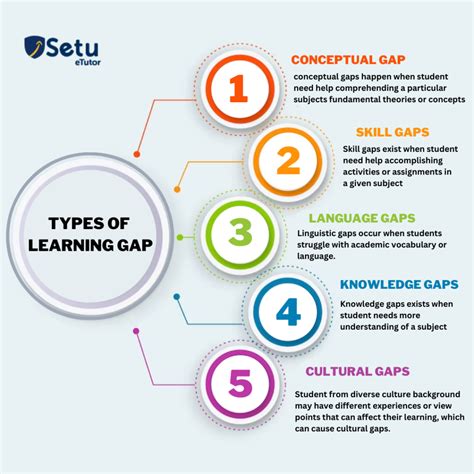
Many students are entering classrooms lacking fundamental life skills, prompting teachers to address gaps in areas like hygiene, communication, and basic household tasks, according to a recent survey and anecdotal reports. Educators are increasingly finding themselves teaching skills that were traditionally learned at home, impacting their ability to focus on core academic subjects.
Teachers across the United States are reporting a concerning trend: students are arriving in classrooms without basic life skills, forcing educators to step in and teach lessons that were once the responsibility of parents or guardians. This revelation highlights significant gaps in students’ preparedness for both academic success and independent living. A recent survey and numerous anecdotal reports underscore the severity of the problem, with teachers expressing frustration and concern over the growing need to address these deficiencies.
“I had to teach a student how to use a washing machine this year,” one teacher shared, reflecting a common sentiment among educators who are finding themselves spending valuable class time on subjects far removed from traditional academics. This anecdote is just one example of the diverse range of life skills that students are lacking, from basic hygiene practices to effective communication techniques.
The skills gap extends beyond household chores and personal care. Teachers are also noticing a decline in students’ ability to manage their time, resolve conflicts peacefully, and communicate effectively in both written and verbal forms. These skills are crucial not only for academic success but also for navigating social situations and future employment opportunities.
According to the survey, a significant percentage of teachers believe that the lack of life skills among students is directly impacting their academic performance. When teachers are forced to spend time teaching basic hygiene, for example, it takes away from the time they can dedicate to core subjects like math, science, and reading. This creates a challenging environment for both students and educators, hindering overall academic progress.
The reasons behind this growing skills gap are complex and multifaceted. Some experts point to changes in family dynamics, with parents working longer hours and having less time to dedicate to teaching their children essential life skills. Others suggest that the increased reliance on technology and screen time may be contributing to a decline in practical skills and interpersonal communication abilities. Additionally, economic disparities can play a significant role, as families struggling with poverty may lack the resources or time to prioritize teaching life skills.
The consequences of this skills gap are far-reaching. Students who lack basic life skills may struggle to succeed in school, maintain healthy relationships, and secure employment. They may also be more vulnerable to exploitation and manipulation, as they lack the critical thinking and problem-solving skills necessary to navigate complex situations.
Addressing this issue requires a collaborative effort from parents, educators, and the community as a whole. Parents need to prioritize teaching their children essential life skills from an early age, while schools can incorporate life skills training into their curriculum. Community organizations can also play a role by offering workshops and programs that teach valuable skills to students and families.
Some schools are already taking steps to address the skills gap by implementing programs that focus on life skills development. These programs may include lessons on personal finance, cooking, cleaning, and communication. They may also incorporate activities that promote critical thinking, problem-solving, and teamwork.
However, these efforts are often hampered by limited resources and competing priorities. Many schools are already struggling to meet academic standards and may not have the time or funding to dedicate to life skills training. This highlights the need for increased investment in education and a renewed focus on holistic student development.
The challenge of addressing the life skills gap is significant, but it is not insurmountable. By working together, parents, educators, and the community can ensure that all students have the skills they need to succeed in school and in life. This requires a commitment to prioritizing life skills education and providing students with the resources and support they need to develop these essential abilities.
The long-term implications of neglecting life skills education are significant. A generation of young people who lack basic skills may struggle to contribute to society and achieve their full potential. This could have a negative impact on the economy, the workforce, and the overall well-being of the nation.
Therefore, it is imperative that we address the life skills gap with urgency and determination. By investing in life skills education, we can empower students to become independent, responsible, and successful members of society. This will not only benefit individual students but also strengthen our communities and our nation as a whole.
The situation calls for innovative solutions and a willingness to adapt to the changing needs of students. Educators and parents must work together to identify the specific skills that students are lacking and develop strategies to address these deficiencies. This may involve incorporating life skills training into existing academic courses, creating new programs that focus specifically on life skills development, or providing parents with resources and support to help them teach their children at home.
Ultimately, addressing the life skills gap requires a fundamental shift in our approach to education. We must move beyond a narrow focus on academic achievement and embrace a more holistic vision of student development that includes the cultivation of essential life skills. This will require a commitment to investing in education, supporting teachers, and empowering parents to play an active role in their children’s lives.
The task is daunting, but the rewards are immense. By equipping students with the skills they need to succeed, we can create a brighter future for them and for our nation as a whole. It is time to prioritize life skills education and ensure that all students have the opportunity to reach their full potential.
One teacher, recounting their experience, said, “It’s not just about teaching them to read and write anymore. We’re having to cover basic hygiene, how to do laundry, and even how to cook simple meals.” The sentiment echoes across classrooms nationwide, painting a picture of an educational landscape grappling with deficiencies that extend far beyond traditional academic subjects.
The original article highlights a crucial issue: the increasing lack of basic life skills among students entering classrooms today. This isn’t just about academic performance; it’s about preparing young people for independent living and responsible adulthood. The implications are far-reaching, impacting not only individual students but also the broader community. Teachers, who are already burdened with numerous responsibilities, are now tasked with filling the gaps in these essential life skills. This situation demands immediate attention and collaborative solutions from parents, educators, and the community to ensure that all students are equipped with the tools they need to thrive.
The Yahoo! Lifestyle article further suggests that the rise of technology may be inadvertently contributing to the problem. While technology offers incredible opportunities for learning and communication, it can also lead to a decline in practical skills and face-to-face interaction. Students who spend excessive time on screens may miss out on opportunities to learn essential life skills through hands-on experiences and real-world interactions.
Moreover, the article subtly touches upon the socioeconomic factors that can exacerbate the life skills gap. Families struggling with poverty may face challenges in providing their children with the resources and support they need to develop these essential skills. This underscores the importance of addressing systemic inequalities and ensuring that all students have access to the opportunities they need to succeed.
The article also implicitly raises the question of accountability. While parents bear the primary responsibility for teaching their children life skills, schools also have a role to play. Should schools be doing more to incorporate life skills training into their curriculum? Should there be a greater emphasis on vocational education and hands-on learning? These are important questions that need to be addressed in order to develop effective solutions.
Ultimately, the article serves as a wake-up call, urging parents, educators, and the community to take action and address the growing life skills gap among students. It highlights the importance of prioritizing life skills education and providing students with the resources and support they need to develop these essential abilities. By working together, we can ensure that all students have the opportunity to reach their full potential and become successful, responsible members of society.
The challenge is significant, but the potential rewards are immense. By investing in life skills education, we can create a brighter future for our students and for our nation as a whole. It is time to prioritize life skills and ensure that all students have the opportunity to thrive.
Further examination of the issue reveals that the lack of these skills not only affects students’ academic performance and personal lives but also has broader implications for society. A workforce lacking in basic problem-solving, communication, and personal management skills can hinder economic growth and innovation. Furthermore, a citizenry unable to manage finances, maintain healthy relationships, or participate effectively in civic life can weaken the foundations of democracy.
The problem isn’t limited to any specific demographic. While socioeconomic factors play a role, teachers are reporting these deficiencies across various communities and income levels. This suggests that broader societal shifts, such as changing parenting styles, increased screen time, and a decreased emphasis on practical skills in schools, are contributing to the problem.
Several factors contribute to the growing life skills gap, but one of the most significant is the changing nature of family dynamics. In many households, both parents work full-time, leaving less time for teaching children essential life skills. Additionally, the rise of single-parent households has further compounded the problem, as single parents often struggle to balance work, childcare, and household responsibilities.
Another contributing factor is the increasing reliance on technology. While technology offers numerous benefits, it can also lead to a decline in practical skills and face-to-face interaction. Students who spend excessive time on screens may miss out on opportunities to learn essential life skills through hands-on experiences and real-world interactions.
Furthermore, the education system itself may be contributing to the problem. In recent years, there has been a growing emphasis on standardized testing and academic achievement, often at the expense of vocational education and life skills training. As a result, students may graduate from high school with a strong understanding of academic subjects but lack the practical skills they need to succeed in the real world.
Addressing the life skills gap requires a multifaceted approach that involves parents, educators, policymakers, and the community as a whole. Parents need to prioritize teaching their children essential life skills from an early age, while schools need to incorporate life skills training into their curriculum. Policymakers need to invest in programs that support families and promote life skills education, and the community needs to provide opportunities for students to develop these skills through volunteer work, internships, and other extracurricular activities.
One potential solution is to integrate life skills training into existing academic courses. For example, math classes could incorporate lessons on personal finance, while English classes could focus on communication skills. This would allow students to learn essential life skills without taking time away from core academic subjects.
Another solution is to create new programs that focus specifically on life skills development. These programs could cover topics such as cooking, cleaning, budgeting, time management, and conflict resolution. They could also incorporate activities that promote critical thinking, problem-solving, and teamwork.
In addition to these initiatives, it is also important to provide parents with resources and support to help them teach their children life skills at home. This could include workshops, parenting classes, and online resources that offer practical tips and advice.
Ultimately, addressing the life skills gap requires a fundamental shift in our approach to education. We must move beyond a narrow focus on academic achievement and embrace a more holistic vision of student development that includes the cultivation of essential life skills. This will require a commitment to investing in education, supporting teachers, and empowering parents to play an active role in their children’s lives.
The consequences of failing to address the life skills gap are significant. A generation of young people who lack basic skills may struggle to succeed in school, maintain healthy relationships, and secure employment. They may also be more vulnerable to exploitation and manipulation, as they lack the critical thinking and problem-solving skills necessary to navigate complex situations.
Therefore, it is imperative that we take action to address the life skills gap and ensure that all students have the opportunity to reach their full potential. By investing in life skills education, we can empower students to become independent, responsible, and successful members of society. This will not only benefit individual students but also strengthen our communities and our nation as a whole.
The long-term implications of neglecting life skills education are significant. A workforce lacking in basic problem-solving, communication, and personal management skills can hinder economic growth and innovation. Furthermore, a citizenry unable to manage finances, maintain healthy relationships, or participate effectively in civic life can weaken the foundations of democracy. It’s a multifaceted problem with far-reaching consequences that demands immediate and sustained attention. Failing to equip our students with these essential skills is not just a disservice to them; it’s a threat to the future of our society.
To successfully tackle this issue, we must acknowledge the role of technology, socioeconomic factors, and the education system itself. We need to explore innovative solutions, invest in comprehensive life skills training, and empower parents to play a crucial role in their children’s development. The time to act is now, before the life skills gap widens further and its impact becomes even more profound. Only through collaborative and concerted efforts can we ensure that all students are equipped with the skills they need to thrive in the 21st century and beyond.
Frequently Asked Questions (FAQ)
1. What specific life skills are students lacking, according to teachers?
Teachers are reporting that students are lacking a wide range of basic life skills, including personal hygiene (showering, brushing teeth), household chores (laundry, cooking, cleaning), financial literacy (budgeting, managing money), communication skills (written and verbal), time management, problem-solving, and conflict resolution. One teacher specifically mentioned having to teach a student how to use a washing machine. The deficiencies extend beyond academics into practical day-to-day living skills necessary for independence.
2. Why are students lacking these essential life skills?
The reasons are multifaceted and complex. Some contributing factors include:
- Changing family dynamics: With more dual-income and single-parent households, parents may have less time to dedicate to teaching life skills.
- Increased screen time and technology use: Excessive screen time can detract from opportunities to learn practical skills through hands-on experiences.
- Economic disparities: Families struggling with poverty may lack the resources or time to prioritize life skills education.
- Shifts in educational priorities: Increased focus on standardized testing and academic achievement may overshadow vocational education and life skills training in schools.
3. What is the impact of this life skills gap on students’ academic performance?
The lack of life skills can directly impact students’ academic performance in several ways:
- Distraction and time constraints: Teachers are forced to spend class time teaching basic life skills, taking away from instructional time for core subjects.
- Reduced focus: Students lacking basic hygiene or organizational skills may struggle to focus on their studies.
- Social challenges: Poor communication or conflict resolution skills can lead to social difficulties and affect their ability to collaborate with peers.
- Overall preparedness: Lack of fundamental skills can hinder their overall readiness to learn and succeed academically.
4. What can be done to address the life skills gap among students?
Addressing this issue requires a collaborative approach involving parents, educators, and the community:
- Parents: Prioritize teaching essential life skills at home from an early age.
- Schools: Integrate life skills training into the curriculum, either as stand-alone courses or incorporated into existing subjects.
- Community organizations: Offer workshops and programs that teach valuable skills to students and families.
- Policymakers: Invest in programs that support families and promote life skills education.
- Innovative solutions: Incorporate practical skill-building activities into various subjects, create mentorship programs, and provide accessible resources for parents.
5. What are the long-term consequences if the life skills gap is not addressed?
The long-term consequences of neglecting life skills education are significant and far-reaching:
- Individual struggles: Students may struggle to succeed in school, maintain healthy relationships, and secure employment.
- Increased vulnerability: They may be more vulnerable to exploitation and manipulation due to a lack of critical thinking and problem-solving skills.
- Economic impact: A workforce lacking in basic skills can hinder economic growth and innovation.
- Societal impact: A citizenry unable to manage finances, maintain healthy relationships, or participate effectively in civic life can weaken the foundations of democracy.
- Hindered potential: Overall, it prevents students from achieving their full potential and contributing meaningfully to society.









